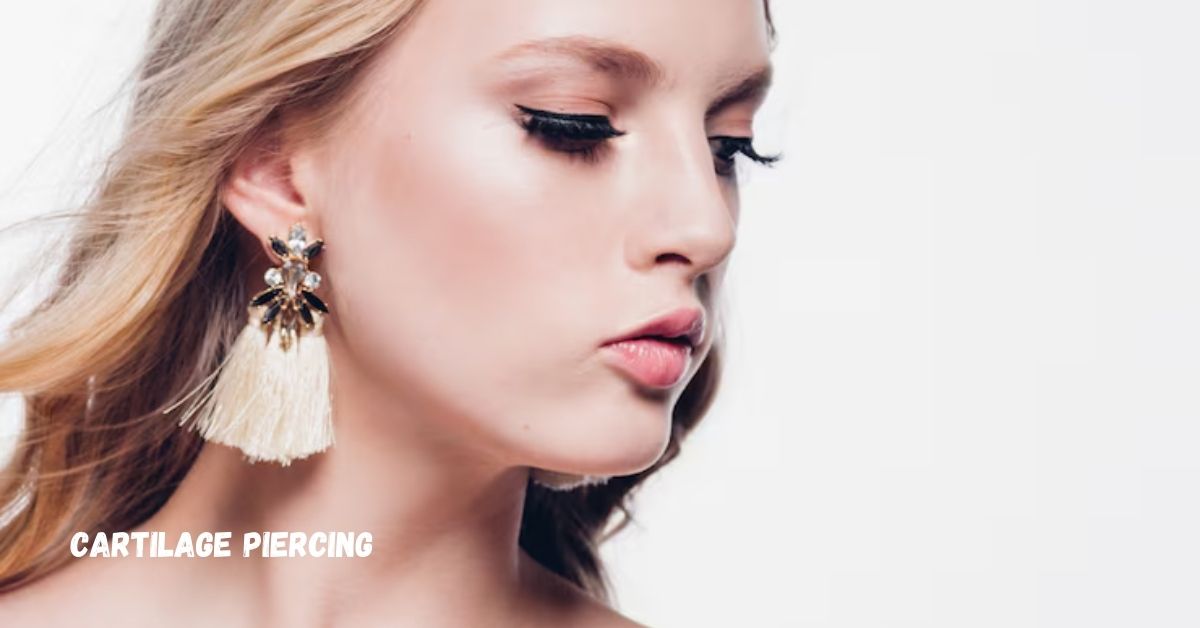Cartilage piercing has become a popular choice for those looking to express their unique style and individuality. Unlike traditional earlobe piercings, cartilage piercings are done on the tougher, upper part of the ear. This type of piercing allows for a variety of jewelry styles and placements, making it a versatile option for anyone looking to add a little edge to their look.
What Is Cartilage Piercing?
Cartilage piercing refers to the process of puncturing the cartilage in the ear. Cartilage is the thick, firm tissue that gives shape to the ear. Unlike the soft earlobe, cartilage is more resistant and requires a bit more precision during the piercing process. The most common locations for cartilage piercings include the helix, tragus, conch, and rook.
Types of Cartilage Piercings
There are several types of cartilage piercings, each offering a distinct look. Here are some of the most popular options:
Helix Piercing: This piercing is done along the upper ear’s outer rim and is one of the most common cartilage piercings.
Tragus Piercing: The tragus is the small, thick piece of cartilage located at the front of the ear canal. Piercing this area can create a bold statement.
Conch Piercing: Located in the inner shell of the ear, the conch piercing offers a unique and eye-catching option for jewelry.
Rook Piercing: The rook is the thick fold of cartilage located in the upper inner ear. This piercing is known for its distinct and stylish look.
The Piercing Process
Getting a cartilage piercing is a relatively simple procedure, but it should always be done by a professional piercer to ensure safety and proper healing. Here’s what to expect during the process:
Consultation: Before getting pierced, you will have a consultation with your piercer to discuss placement, jewelry options, and aftercare.
Preparation: The piercer will clean the area thoroughly to prevent infection. They may also mark the spot where the piercing will be done to ensure accuracy.
Piercing: Using a sterilized needle, the piercer will create a hole in the cartilage. The process is quick, but you may feel some pressure or a sharp pinch.
Jewelry Insertion: After the hole is made, the piercer will insert the jewelry of your choice. It’s important to choose high-quality materials like surgical steel or titanium to reduce the risk of irritation or allergic reactions.
Aftercare Instructions: The piercer will provide detailed aftercare instructions to help you care for your new piercing and avoid complications.
Healing and Aftercare
Cartilage piercings typically take longer to heal than earlobe piercings due to the thickness of the tissue. On average, healing can take anywhere from 6 months to a year, depending on the location and your body’s healing process. During this time, proper aftercare is crucial to prevent infection and promote healing.
Cleaning: Clean the piercing twice a day with a saline solution or a piercing aftercare product recommended by your piercer. Avoid using alcohol or hydrogen peroxide, as these can irritate the piercing.
Avoid Touching: Try not to touch or twist the jewelry, as this can introduce bacteria and delay healing.
Be Mindful of Hair and Clothing: Be cautious of hair, hats, and clothing that could catch on the piercing and cause irritation.
Monitor for Infection: Keep an eye out for signs of infection, such as redness, swelling, or discharge. If you suspect an infection, contact your piercer or a healthcare professional immediately.
Choosing the Right Jewelry
The type of jewelry you choose for your cartilage piercing can greatly impact both the healing process and the final look. Here are some tips for selecting the best jewelry:
Material: Opt for hypoallergenic materials like surgical steel, titanium, or gold. These are less likely to cause irritation and are safe for long-term wear.
Style: Cartilage piercings allow for a variety of jewelry styles, including studs, hoops, and barbells. Consider your personal style and comfort when choosing the right piece.
Size: Make sure the jewelry is appropriately sized for your piercing. Jewelry that is too tight or too loose can cause discomfort and affect the healing process.
Potential Risks and Considerations
While cartilage piercings are generally safe, there are some risks and considerations to keep in mind:
Infection: Cartilage piercings are more prone to infection than earlobe piercings due to the thicker tissue. Proper aftercare is essential to minimize this risk.
Keloids: Some people may develop keloids, which are raised, scar-like formations around the piercing site. If you have a history of keloids, discuss this with your piercer before getting a cartilage piercing.
Pain: Cartilage piercings can be more painful than earlobe piercings due to the thickness of the tissue. However, the pain is usually brief and manageable.
Expressing Your Style with Cartilage Piercings
One of the best things about cartilage piercings is the ability to customize your look. Whether you prefer a single piercing or multiple piercings, there are endless ways to express your style. Mixing and matching different types of cartilage piercings can create a unique and personalized ear design that reflects your individuality.
Cartilage piercings are also versatile when it comes to jewelry options. From simple studs to elaborate hoops and dangles, the possibilities are endless. You can change your jewelry to match your mood, outfit, or occasion, making cartilage piercings a fun and flexible addition to your personal style.
Conclusion
Cartilage piercings offer a stylish and customizable way to express yourself. With proper care and attention, these piercings can heal beautifully and provide a unique addition to your look. Whether you’re a piercing enthusiast or a first-timer, understanding the process, aftercare, and potential risks will help ensure a positive experience.
FAQs
How long does a cartilage piercing take to heal?
Healing time for a cartilage piercing can range from 6 months to a year, depending on the location and aftercare.
Can I change my jewelry before the piercing is fully healed?
It’s best to wait until the piercing is fully healed before changing the jewelry to avoid complications.
What should I do if my piercing becomes infected?
If you notice signs of infection, such as redness, swelling, or discharge, contact your piercer or a healthcare professional for advice.
Is cartilage piercing more painful than earlobe piercing?
Cartilage piercings can be more painful due to the thickness of the tissue, but the pain is usually brief.
Can I get multiple cartilage piercings at once?
Yes, you can get multiple cartilage piercings at once, but keep in mind that this may increase the healing time and require more careful aftercare.











